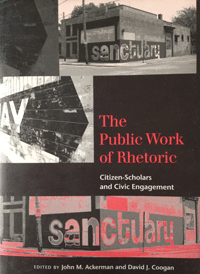Rhetorical Interventions (Ch. 6–10)
This section of the book considered the transformative nature of rhetoric for calling publics together, for engaging with local publics, for supporting the public work of others, and for circulating public discourse.
Ch. 6 - Rhetorical Engagements in the Scientist’s Process of Remaking Race as Genetic, Celeste M. Condit
Celeste Condit noted the powerful influences exerted by the technical sphere upon paths of social change
(p. 119) and described a series of four interventions
with scientists on their own terms around questions of genetics and race. The New York Times articles linked here (below) contextualize some discussions of race and genetics that are in
more broad circulation. Condit began her chapter by citing Nicholas Wade’s (2002) article which relied on a Stanford biologist’s claim that race is a valid way
of categorizing genetic differences. After noting the predictable ways articles like these surface every few years, Condit asked, is there anything rhetoricians can do to
preclude scientists from constructing these racist statements in the guise of scientific truth?
(p. 119). Condit then narrated her team’s attempts which included
participating in The Human Genetic Variation Consortium, publishing in scientific journals data about the impact of race-based medicine, presenting to genetics researchers on the
harmful impact of race as genetic, working with scientists to relabel the International Hapolotype Map (Hap Map) with more carefully and precisely selected groupings, and
participating in a National Institutes of Health (NIH) roundtable on race. The International HapMap Project (linked in Figure 5) documented genetic variants and how those variants were distributed across populations
and geographies.
Throughout the piece, Condit’s own ill-ease and reflexivity were apparent, demonstrating that throughout her arguments in the scientific community, she has been engaged in
the work of putting her own beliefs at risk (Ehninger, 1970). The value of this piece, then, is both in its case study approach to documenting the iterative, abductive
rhetorical reasoning of venturing and testing a working theory (Flower, 2008) of wise rhetorical action and in its invitation to take up work that is well upstream
of
public scientific controversies
(Crick & Gabriel, p. 203) where rhetorics of scientific discourse have been shaped and are shaping scientific knowledge among scientists.
Resources Related to Race and Genetics

